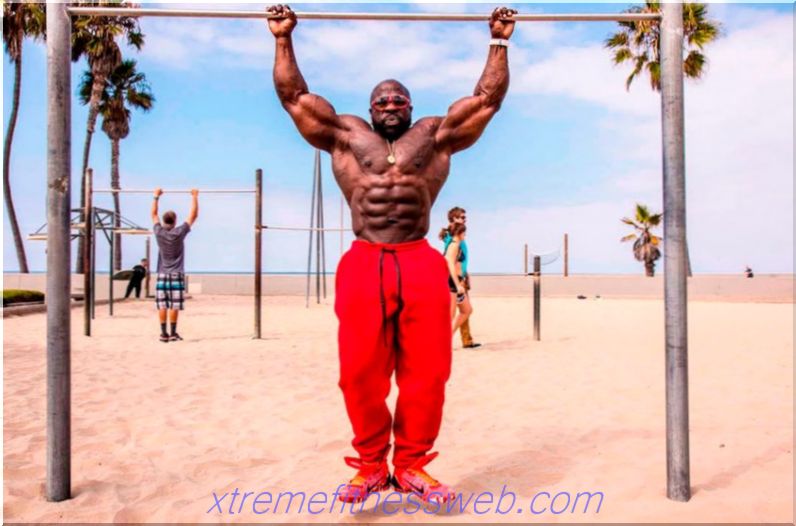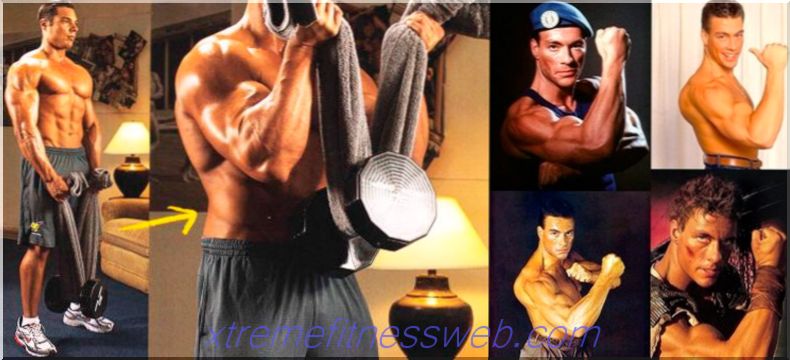- Execution technique
- Parsing exercise
- Correct execution
- Gross technical errors
- Tips for beginners
- Program Inclusion
- Contraindications
- Replacement

This exercise, despite the saying, is not for biceps, but for brachioradialis. The brachioradialis muscle makes the forearms more bulky. In life, it helps to strengthen grip, hold large weights, actively pull up on the horizontal bar, carry huge bags, and generally look great. After all, there is nothing more sad than the combination of a huge biceps and a small but proud forearm. Exercise is often done by bodybuilders, but it is less common in fitness training. But in vain, it would help to solve most of the problems with pull-ups and hangs on horizontal bars. How to do lifts back grip right ">
Content
- 1 Technique
- 1.1 Recommendations
- 2 Analysis of exercises
- 2.1 What muscles work
- 2.2 Pros
- 2.3 Cons
- 3 Proper execution
- 4 Gross technical errors
- 5 Tips for Beginners
- 6 Inclusion in the program
- 7 Contraindications
- 8 Replacement
Execution technique

Starting position
- The barbell is in straight downcast arms, pronounced grip, that is, with the knuckles up;
- The shoulder blades should be moderately brought to the spine, shoulders - removed from the ears;
- The abdominal muscles are tightened and slightly contracted, it is better to slightly remove the natural deflection in the lower back.
Traffic
- On exhalation, the arms are bent at the elbow joints, and the projectile is brought to the shoulders;
- The movement is powerful, but performed in one, without “twitching” the bar by the body, and shocks with legs;
- The lowering of the rod is controlled, it is possible to slow down the eccentric phase a little, resisting the lowering of the muscles;
- At the bottom point, do not linger, immediately begin the next repetition.
Attention
- This option does not allow cheating. Exercise does not imply large weights, it is not aimed at increasing total muscle mass, and rather refers to "polishing." Therefore, you need to choose the weight of the bar so that there is no need to throw it on yourself due to swinging hips;
- The movement should not be "high", the recession of the bar in the upper chest removes the load from the working muscles, so lower it should be started before the projectile touches the pectoral;
- During training should not "lose" weight. The eccentric phase in biceps exercises is also important;
- The forearms should be located along the body, and not brought forward. Ideally, the elbows do not move, do not move forward
Recommendations
- Unlike a simple lifting of the barbell to the biceps, in this option it is recommended to exclude the work of the hands completely. So you can better control the work of brachialis, and more actively include the target muscle, and not everything else. The brush should serve as a continuation of the forearm and not break;
- No need to try to make movement in maximum amplitude, its upper part does not allow the muscles to contract more;
- It is better to take the bar from the racks, especially if the flexibility does not allow you to take it from the floor. So you can control the starting position better
Parsing exercise
What muscles work

- Muscular anatomy - working and promoting muscle movement
- Basic - brachioradialis muscle, as well as biceps;
- Auxiliary - brachial muscle, anterior deltas and palm muscles
pros
- Helps strengthen grip without specific exercises;
- Develops a forearm;
- Allows to visually increase the arms, even when the limit of biceps development has already been reached;
- Prevention of pain in the wrists - reduces the imbalances in the development of flexors and extensors of the wrist;
- Allows to increase working weights in pull-ups and lifts for biceps;
- With careful execution strengthens the ligaments of the elbow joint, allows you to achieve more in the bench press
Minuses
- The movement is rarely performed correctly enough - a common technique with moving the elbows forward removes the load from the target muscles and does not allow them to be pumped well enough;
- Exercise is not “sharpened” for lifting a lot of weight. People who ignore this fact usually experience injuries to the ligaments of the elbow joint.
Correct execution

- Correctness of performance is evaluated not only from the position of the initial position, but also from the point of view of which muscles are turned on during work. Acceleration of weight by the body, weight lifting due to the use of legs, and swinging, as well as too large a range of work, make this exercise quite pointless;
- Elbows should not be placed on the stomach, and far away from the body;
- The dead center in this exercise is not at the top, but at the bottom. If the athlete cannot begin the exercise on their own, sometimes they resort to the help of a training partner. But for fitness purposes it is almost always more advisable to reduce the weight of the barbell;
- Lowering should be forced slow, no need to drop the bar;
- The grip in this exercise is not fundamental. The athlete can use open, if it is convenient for performing movement, can perform closed, if the projectile is better controlled;
- Additional bending of the hands and movements in them are not allowed.
Gross technical errors
- Elbows walking along the entire trajectory of movement;
- Stalling at the bottom;
- Lapping the shell body;
- Inertial downward movement;
- Lack of involvement of the muscles of the center of the body, "loosening" of the body back and forth with each movement;
- Too much flexion of the hands
Tips for beginners

- It will be easier to exclude cheating with the body if you press the back and shoulder blades to the wall. The buildup can be removed by pressing the spine to the vertical rack of any simulator, or support. At first, it’s easier to learn how to include biceps in the work;
- The brachial muscle works better if a straight neck is used. But for those who have pains in the hands in the exercise, a curved neck is suitable. It will help relieve stress on the wrists and make exercise more comfortable;
- To strengthen the grip, you can use the neck extensions, or perform an exercise on the axis of Apollo Axel. This will help if the goal is strength work with a barbell, or many pull-ups on a horizontal bar without straps;
- Ideally, the weight should be selected so that most of the repetitions take place in the middle of the amplitude. As the “dead hang" of the bar below is pretty useless, so throwing it to the very top;
- Feet should be placed freely on the floor, but wide enough so that there are no problems with swinging. When performing lifts, legs in statics are best turned on, resting against the floor;
- Those with hypertrophy of the brachioradial and brachial muscles in priority can use the straps so as not to drop the barbell
Program Inclusion

In ordinary fitness training, movement is relatively rare. It is included by the latter either in the training of the back and biceps, or in the comprehensive training of the hands. If the trainer plans to develop athlete’s strength indicators as a priority, he can include the movement as a full body in the program, usually on the day when the deadlift is performed.
In bodybuilding, movement is not usually alternated with classic biceps flexion. The athlete performs both variations during one training session. In fitness, it is possible to "spread" the days of the week of classical flexion into biceps, and exercises performed by reverse grip.
The classic retry pattern is for isolation exercises. Usually this is 12-15 reps in the set, in 3-4 sets.
Contraindications
Inflammatory processes in the elbow joints, and wrists are a limiting factor. They do not allow you to take significant weights and limit the movement itself. Usually, in case of inflammation, it is recommended to exclude biceps flexion in any version, or perform a “rehabilitation” option with a rubber shock absorber of medium resistance.
Injuries such as tears and tears of the biceps also serve as a limiting factor for those wishing to perform this exercise. In this case, the general access to the workout is issued by a doctor.
Replacement

This exercise is sometimes replaced by work in the bottom block of the crossover. Then either a straight handle or a curved handle is selected, which resembles a curved neck. The movement is performed by bending the elbows, it is important to choose the right stand. The athlete can stand both face and back to the crossover. In the second version, the block will pass between the legs, and this option is more difficult in terms of resistance.
Replacement is also possible when the movement is carried out with rubber shock absorbers. This is usually well suited for training in the rehabilitation period. Exercise is almost no substitute for flexion with dumbbells. For beginners, it is difficult to achieve control of the bar in this case. Experienced can perform movement with dumbbells, but you need to constantly monitor the position of the elbows.
Reverse grip biceps is a great exercise for big arms. Control of equipment and moderation in the choice of working scales will help to achieve a result in the gym.







